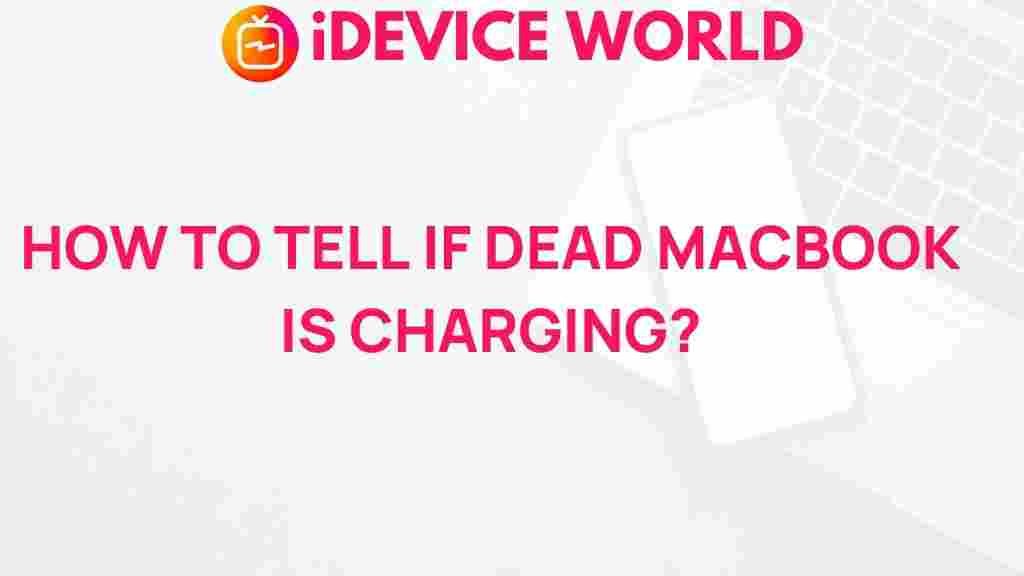Unveiling the Mystery: Signs Your Dead MacBook Might Still Be Charging
Many MacBook users have experienced the frustration of a dead MacBook. When your beloved device fails to power on, it can be disheartening. However, before you panic and consider replacing it, it’s essential to understand that your MacBook might not be as dead as you think. In this article, we will explore the signs that indicate your dead MacBook might still be charging and provide troubleshooting tips to help you get your device back up and running.
Understanding the Symptoms of a Dead MacBook
A dead MacBook may exhibit various symptoms that can lead to confusion about its actual state. Here are some common signs:
- No power: The most apparent sign is when the MacBook doesn’t respond when you press the power button.
- Black screen: The screen remains black, indicating that the system isn’t booting up.
- Unresponsive keyboard and trackpad: The keyboard and trackpad do not respond, showing no signs of life.
- Charging indicator issues: The LED on the MagSafe adapter might not light up as expected.
Recognizing these symptoms can help you determine if your MacBook is genuinely dead or if it may still be charging.
Step-by-Step Process to Determine if Your Dead MacBook is Charging
If you suspect that your dead MacBook might still be charging, follow these steps to assess its condition:
1. Check the Power Adapter and Connection
The first step is to ensure that your power adapter is functioning correctly. Here’s how:
- Inspect the adapter for any visible damage.
- Make sure the connection to the power outlet is secure.
- Try using a different outlet to rule out issues with the power source.
- If possible, test the adapter with another MacBook to confirm it works.
2. Look for Charging Indicators
Once you’ve verified the adapter, check your MacBook for any signs of charging:
- MagSafe LED: If you have a MacBook with a MagSafe connector, observe the LED indicator. A green light suggests a full battery, while an amber light indicates charging.
- Keyboard lights: Some models have keyboard backlighting that may illuminate when connected to power, even if the screen is off.
3. Perform a System Reset
If there are no visible indicators, try resetting the System Management Controller (SMC). This can help resolve power-related issues. Here’s how:
- For MacBooks with a T2 chip: Press and hold the power button for 10 seconds.
- For older models: Disconnect the power adapter, press and hold Shift + Control + Option + Power button for 10 seconds, then reconnect the adapter and press the power button.
4. Allow Time to Charge
Sometimes, a completely drained battery needs time to accumulate enough charge to power the MacBook. Leave your device connected for at least 15-30 minutes before trying to turn it on again.
5. Listen for Sounds
Pay attention to any sounds your MacBook makes when attempting to power on:
- Listen for fan noises, which can indicate that the device is receiving power.
- Note any beeping sounds that could signify hardware issues.
Troubleshooting Tips for a Dead MacBook
If your dead MacBook still does not respond, consider the following troubleshooting tips:
1. Inspect for Hardware Issues
Check for potential hardware problems that could be causing the issue:
- Examine the ports for debris or damage.
- Look for any signs of liquid damage or corrosion.
2. Boot in Safe Mode
If your MacBook turns on but does not boot, try entering Safe Mode:
- Restart your MacBook and hold down the Shift key immediately after pressing the power button.
- Release the Shift key when you see the Apple logo.
Safe Mode can help you diagnose issues with startup items or system caches.
3. Seek Professional Help
If you’ve gone through the above steps and your MacBook still won’t charge or power on, it may be time to seek professional assistance. Consider taking your device to an Apple Store or an authorized service provider. They can perform advanced diagnostics and repairs that may not be possible at home.
Conclusion
Experiencing a dead MacBook can be frustrating, but understanding the signs that it might still be charging can save you time and money. By checking the power adapter, looking for charging indicators, and following troubleshooting steps, you may be able to revive your device without needing a costly replacement. Remember, when in doubt, don’t hesitate to reach out to professionals who can assist you further.
For more tips on MacBook maintenance and troubleshooting, visit our MacBook support page. And for external resources on battery health, check out Apple’s official guide.
This article is in the category Guides & Tutorials and created by iDeciveWorld Team
